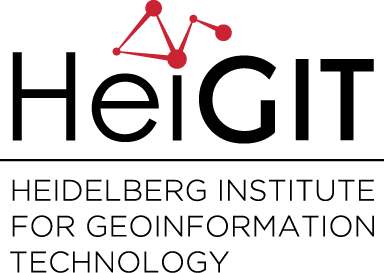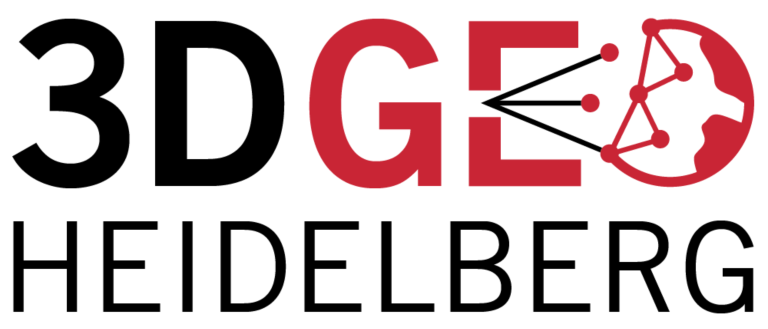Category: Research
-
Stellenangebot vom DRK Generalsekretariat Berlin zur Unterstützung der HeiGIT Kooperation
Sie haben Erfahrung in den Bereichen Geoinformatik und Open Data und würden gerne dazu beitragen, dass Menschen in Deutschland und weltweit Hilfe erhalten? Sie würden gerne als Teil des größten humanitären Netzwerks der Welt helfen, dessen zukünftige Ausrichtung in diesen Bereichen mitzugestalten? Dann kommt diese Stellenausschreibung genau richtig: Das Generalsekretariat des Deutschen Roten Kreuz in…
-
FOSS4G 2021 Videos with HeiGIT contributions online – OSM data quality and MapSwipe
Recently videos with our contributions by HeiGIT to the FOSS4G conference were put online. Did you miss the event? Now you can watch whenever you like 🙂 Benni by HeiGIT explains who to use the ohsome.org framework to develop an OSM Confidence Index to support humanitarian mapping https://www.youtube.com/watch?v=DWkISL4qbME FOSS4G 2021 Using the ohsome framework to…
-
Global Health Academy 2021: workshop material online
Last week, the Global Health Academy 2021 took place in an online format with a focus on the COVID-19 pandemics. The conference was conveyed by the Heidelberg Institute of Global Health (HIGH) and aimed at practitioners, researchers and PhD students in the public health domain. Dr. Sven Lautenbach with support by Steffen Knoblauch and Marcel…
-
Research and Career Network: Close-range Sensing Techniques in Alpine Terrain – Alumni Event
A virtual alumni event of the Innsbruck Summer School of Alpine Research will take place on Tuesday, 7th December, 15:00-17:00. Close- and remote sensing techniques turned to essential methods for mapping and quantifying processes in mountain environments. Many different sensor systems, platforms and analysis approaches are available for observing and monitoring dynamic patterns and extracting…
-
Waterproofing Data Project: Sharing experiences and accessing impacts
After three interesting years, the Waterproofing Data Project (WPD) comes to an end. Starting with a workshop in Brazil and several field trips, Corona times started and we had to rethink and reorganize our plans for the second half of the project. Our final workshop day in Heidelberg was also planned to be in person…
-
Global Health Academy Heidelberg 2021
Next week Tuesday and Wednesday, 2.-3. November the Global Health Academy will take place. An online forum for an open exchange, debate and training on Global Health challenges. The Forum is hosted by the Heidelberg Institute of Global Health together with the Heidelberg Graduate School of Global Health. In close collaboration with the Institute of…
-
WENN ES IN DER STADT ZU HEISS WIRD
Aktuelle Meldung der Universität Heidelberg zum Projekt HEAL: https://www.uni-heidelberg.de/de/newsroom/wenn-es-in-der-stadt-zu-heiss-wird BADEN-WÜRTTEMBERG STIFTUNG FÖRDERT HEIDELBERGER PROJEKT ZU ROUTINGDIENST MIT HITZEVERMEIDENDEN WEGSTRECKEN Wo in der Stadt Heidelberg ist es besonders heiß und wie wirken sich lokale Hitzebelastungen auf gefährdete Personengruppen aus? Mit dieser Frage befasst sich ein Forschungsprojekt, durchgeführt von der Abteilung Geoinformatik und dem TdLab Geographie am Geographischen…
-
2021 Volcanic Eruption in La Palma (Spain) continues – Explore the temporal changes of the Lava Field in OpenStreetMap on ohsomeHeX
On the 19th of September 2021 a volcanic eruption on the Canary Island of La Palma started. Since then the resulting lava field is constantly growing and continues its destructive expansion. According to an article in the spanish newspaper El Pais, after one month of eruptions – till 19th of Oktober 2021- the volcano destroyed…
-
Automatic mapping of national surface water with OpenStreetMap and Sentinel-2 MSI data using deep learning
Large-scale mapping activities can benefit from the vastly increasing availability of earth observation (EO) data, especially when combined with volunteered geographical information (VGI) using machine learning (ML). High-resolution maps of inland surface water bodies are important for water supply and natural disaster mitigation as well as for monitoring, managing, and preserving landscapes and ecosystems. In…
-
Alexander Zipf selected as Marsilius Fellow 2021/2022 – Project with HIGH on Climate Change and Health
Many pressing problems of our time – climate change, aging societies, questions of modern medicine – cannot be solved by one discipline alone. It is becoming ever more urgent for scholars to collaborate across disciplines – natural sciences, life sciences, and social sciences, law, and humanities. The Marsilius Kolleg at Heidelberg University is an institutional…
-
Uncovering the dynamics of the inland dunes in Sandhausen using UAV-borne 3D data acquisition
For the first time, the inland dunes in Sandhausen (Baden-Württemberg, Germany) have been captured by UAV-borne photogrammetry and laser scanning. The dunes are a precious habitat for many specialized plants and animals. They formed during the last ice age by sand drift from the Rhine valley. The large inland dunes, originally stretching from Karlsruhe to…
-
Kick-off workshop for the research program “Innovation for adaptation to climate change” by Baden-Württemberg Stiftung
The project HEAL (HeiGIT, GIScience, TdLab Geographie) is funded by the Baden-Württemberg Stiftung as part of the research program “Innovation for adaptation to climate change“. HEAL aims at an extension of the openrouteservice to allow the generation of heat avoiding routes, using Heidelberg as a test case. The project aims specifically at vulnerable groups such…


